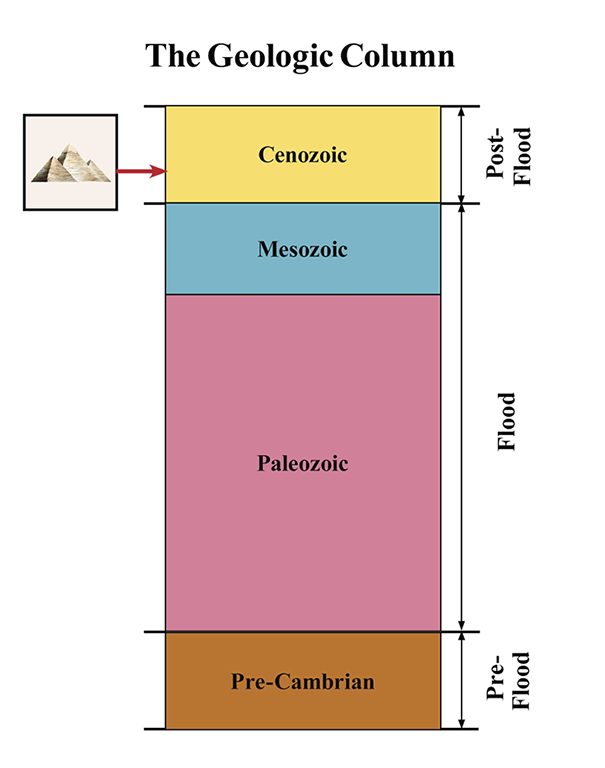Do Preachers Have Authority Over Elders?
Do Preachers Have Authority Over Elders?
Does the Bible authorize the preacher in the local congregation to exercise authority over the elders, or over the members at large? The Bible very clearly teaches that each local congregation is to mature to the point that it can appoint a plurality of adult males, who meet the specific qualifications pinpointed in Scripture (1 Timothy 3:1-11; Titus 1:5ff.), to serve as the elders/shepherds/overseers of that single church (Acts 20:17,28; Philippians 1:1; 1 Peter 5:1-4). They exercise shepherding or overseeing authority over the entire congregation/flock (1 Thessalonians 5:12-13; 1 Timothy 5:17; Hebrews 13:7,17).
The Bible also clearly teaches that among the divinely-ordained functions in the church from the very beginning has been preachers and evangelists (Ephesians 4:11; 2 Timothy 4:5). These individuals clearly wield a measure of authority, by virtue of the message that they preach (1 Timothy 4:11; 2 Timothy 4:2; Titus 1:13; 2:15). They are to preach the Word of God without fear or favor, even in the face of opposition from fellow Christians.
The question, however, that presents itself regarding these two official functions in the Kingdom of Christ is: Is the preacher in a local congregation to submit to the authority of the elders; or may the preacher exercise authority over the elders and other members?
Since the Bible clearly teaches that elders are the shepherds of the local congregation, it naturally follows that they exercise that same authority over the preacher (if he is a member there). After all, they hired him! The mere act of hiring a preacher implies a measure of authority—and the same level of authority is retained by the elders to fire him! Likewise, if a congregation has no elders, the Bible places the authority to make decisions into the hands of the men of the congregation (in keeping with the principle of male leadership in the church—1 Timothy 2:8-15). They, therefore, have the authority to hire and fire a preacher—hence, exercising authority over him. Observe: God delegates authority to the preacher to preach God’s truth—and no eldership has the authority to dictate to a preacher to not preach the truth, or to preach error. Nevertheless, elders retain the authority to determine whether the preacher is permitted to preach the truth at that location!
God’s truth on the matter of authority in the local church is just that simple. The only way these foundational principles could be modified is if the Bible issues any supplementary directive(s) that would indicate that the preacher is somehow an exception to the extent that he is not under the authority of the elders. Sadly, some brethren have supposed that they have found just such an exception in Titus 1:5—
“For this cause left I thee in Crete, that thou shouldest set in order the things that are wanting, and ordain elders in every city, as I had appointed thee” (KJV).
Some brethren reason: Since Titus, an evangelist, was instructed by an apostle to go to the various congregations on the island of Crete and to ordain elders in those churches, the evangelist today is not under the authority of any eldership, but in fact, wields his own authority over them, even having the right to select them in the local congregation.
Observe that this line of thinking assumes a particular meaning for the word “ordain.” It assumes that the evangelist was to select or hand-pick the elders. For the thoughtful student of the Bible, an immediate challenge to such thinking ought to be that it would not be possible for Titus to know personally all the members of the various churches all over the island of Crete. Yet, in order to make scriptural selections, he would have to be able to match up the divinely-stipulated qualifications (given in 1:6ff.) with each prospective elder. Further, it is obvious that Titus did not “stay around” in order to act as a pastor over the Cretan churches—he went on to Nicopolis (3:12).
The heart of the matter, however, is the meaning of the term rendered in the KJV as “ordain.” The word is more generally translated “appoint” (NKJV, ASV, NASB, ESV, NIV, RSV). The underlying Greek word is kathistemi. It has a variety of meanings, including “bring, conduct, take” as in Acts 17:15, “to appoint or set in charge” as in Luke 12:42 and Hebrews 5:1, and “to make or cause” as in 2 Peter 1:8. The salient question is: does the use of this word in Titus 1:5 mean that the evangelist actually selected the elders? Answer: it does not. For proof, consider that the Bible is its own best interpreter. A parallel occurrence of the term appears in Acts 6, when a problem arose within the early church regarding the daily distribution of benevolent assistance to the widows. The apostles insisted that their inspired function precluded them from having the time to handle such matters, and that the situation was to be resolved by the selection of qualified individuals who could manage “this business” (vs. 3). Read carefully the apostolic directive:
Therefore, brethren, seek out from among you seven men of good reputation, full of the Holy Spirit and wisdom, whom we may appoint over this business; but we will give ourselves continually to prayer and to the ministry of the word (Acts 6:3-4, NKJV).
To whom did the apostles give the responsibility to “seek out” men to serve in the official capacity? Answer: the members of the congregation. Consider other renderings of the phrase: “Therefore, brethren, select from among you seven men…whom we may put in charge of this task” (NASB); “Therefore, brethren, pick out from among you seven men…whom we may appoint to this duty” (RSV). “Brothers, choose seven men from among you…. We willturn this responsibility over to them” (NIV); “Therefore, brothers, pick out from among you seven men…whom we will appoint to this duty” (ESV).
It is apparent from this passage that the membership was to select their own officers—strictly based on divinely-given qualifications—and that the apostles would merely install them or formally confirm their appointment. The KJV rendering of “look ye out” carries the idea of the members consulting with each other, investigating candidate qualifications, and coming to an agreement—before the individuals were even set before the apostles to be inducted into office.
Many commentators agree with this assessment of the text. For example, Greek scholar J.W. Roberts stated:
The term ‘appoint’ here refers to the setting apart or induction of elders into their place. It does not refer to the selection of the elders…. The selection and appointment were separate. The evangelist Titus had the duty to set in office and undoubtedly helped in the congregational selection of the elders, but nothing indicates that he did the selection himself (1963, pp. 8-9, emp. added).
Nineteenth century commentator Albert Barnes observes:
Titus was to appoint or set them over the churches, though with what ceremony is now unknown. There is no reason to suppose that he did this except as the result of the choice of the people (1847, p. 267, emp. added).
Lenski states:
The verb does not mean “to ordain” (our versions) although they were actually ordained by the laying on of hands; Paul speaks of placing them in office, having them elected by the congregations and then ordaining them; the former is the main thing (2001, p. 896, emp. added).
But why have the apostles (in Acts 6) or Titus (in Titus 1), under Paul’s direction, even be involved in the official installation ceremony? The text does not say, but it would make sense for them to do so in order to convey to the congregations an official, authoritative, apostolic sanction to the first formalization of church officers in these first century churches.
NOTICE: Even if the preacher, by divine directive, was not under the authority of the local eldership, nevertheless, the Bible is extremely clear that the elders DO exercise authority over the flock committed to their charge. So no congregation of the Lord’s people should ever exist in which the preacher has assumed to himself ruling authority over a congregation. If that congregation has elders, THEY are the ones designated by God to “rule” (1 Timothy 3:5; 5:17). If that congregation does not have elders, then the adult males are to make the decisions—not the preacher (except as one vote among the men). Any preacher who has taken to himself the control of a congregation, in which he presents himself as “the pastor” (like the denominations), and continually cultivates and facilitates that mentality among the members, is a disgrace to the Lord’s cause and a blight on the work of the evangelist. To assume such authority without the approval of God is vehemently condemned in the Scriptures (e.g., 3 John 9; Numbers 16).
Titus 1:5 provides no support for the unbiblical, denominational notion of evangelistic oversight.
References
Barnes, Albert (1847), Notes on the New Testament: 1 Thessalonians to Philemon (Grand Rapids, MI: Baker), 2005 reprint.
Lenski, R.C.H. (2001 reprint), The Interpretation of St. Paul’s Epistles to the Colossians, to the Thessalonians, to Timothy, to Titus, and to Philemon (Grand Rapids, MI: Hendrickson Publishers).
Roberts, J.W. (1963), Titus, Philemon & James (Austin, TX: Sweet).

REPRODUCTION & DISCLAIMERS: We are happy to grant permission for this article to be reproduced in part or in its entirety, as long as our stipulations are observed






 First, keep in mind that, although roughly 2,400 B.C. is generally accepted as the date of the Flood, the chronologies of Genesis 11 allow for an expansion of a few hundred years.
First, keep in mind that, although roughly 2,400 B.C. is generally accepted as the date of the Flood, the chronologies of Genesis 11 allow for an expansion of a few hundred years.